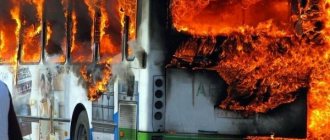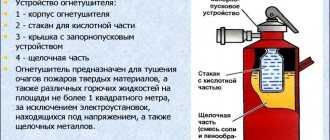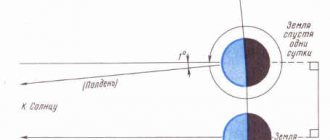It is not for nothing that patrol police officers insist on annual technical inspection of all cars. The fact is that in such a confined space, even a small problem with the wiring can cause a fire, and in the worst case, lead to human casualties.
The actions of the driver and passengers in case of a fire in a car must be clear, coordinated and fast. Unfortunately, such troubles always happen unexpectedly, so you need to familiarize yourself with the algorithm of actions in such a case in advance.
Sequential actions in case of fire in a car
The safety of people in the vehicle, as well as other road users, will depend on the driver’s actions in the event of a car fire (Figure 1).
Figure 1. If your car catches fire, you need to act quickly and without panic.
Therefore, if the first signs of fire appear: the smell of smoke or gasoline, the visual appearance of fire or smoke, you must immediately stop the vehicle. Then you need to turn off the engine and remove the key from the lock.
If the car runs on gas, you need to immediately turn off the taps in the luggage compartment.
Next, you need to put the car on the handbrake, remove the terminals from the battery and get out of the car. If the doors are blocked, break out the window and climb out through it. You can try to put out a minor fire yourself using a fire extinguisher, but if the fire spreads and has reached the gas tank area, you should immediately leave the car and move 10-15 meters away from it. After this, you need to immediately call the fire department.
Car fire extinguisher as a means of extinguishing fires
When leaving your vehicle unattended, analyze the situation. A nearby car or trash can poses a threat if it catches fire. A stain of spilled oil or gasoline will cause a fire in the car if it comes into contact with an open flame.
At the first sign of a fire while driving, you need to immediately stop, turn off the engine and secure the car with the hand brake. Collect documents and remove passengers. Determine the source of the fire in the car by carefully opening the hood. If there is fire on the gas tank, quickly move away because an explosion is possible.
Having called the fire service, begin to extinguish the fire in the car using available means: car fire extinguisher , thick blankets, sand.
Article sent by: Wladimir01
I like (41)
Articles on the topic
0 54
Protective suit L-1. Performance characteristics of the L-1 protective suit. How to put on and take off a light protective suit
Published: January 20, 2017
Wildfires, ecology and safety
Protective suit L-1. Performance characteristics of the L-1 protective suit. How to put on and take off a light protective suit
Published: January 20, 2021 The L-1 light protective suit is a special type of clothing designed to protect the human body from direct contact with negative environmental factors. The kit protects the skin from radioactive dust and exposure to harmful substances...
- Emergency chemically hazardous substances. Characteristics of hazardous substances. Signs of damage to hazardous substances
- How to protect a populated area from fire: a short set of rules
- Fire safety prevention. Fire prevention
Main causes of fire
If the driver properly looked after the car and regularly carried out preventive maintenance, a fire will not occur due to a technical malfunction (Figure 2).
Figure 2. A common cause of fire is the negligence of the driver himself.
But in some cases, nothing depends on the owner and a fire can be caused by:
- Short circuit, fire, or other fault in the electrical wiring.
- Failure to seal the fuel system, which leads to fuel leakage.
- High temperature of some parts due to friction.
- Smoking while driving or violating safety rules when transporting explosive substances.
In addition, the car can catch fire due to a road accident, the actions of ill-wishers or a thunderstorm.
Fire in a car
Behavior rules
Actions in case of a car fire
A car is a real warehouse of flammable materials: gasoline, oil, rubber, paint, leather or fabric, wiring, etc.
A car fire can be caused by:
• faulty electrical wiring;
• depressurization of the fuel system;
• high temperature of some parts;
• smoking in a car;
• improper transportation of dangerous goods;
In the event of a fire, the driver of the car must be ready to take the right actions and correctly localize the source of the fire. There are three most important things that you should always have in your car: a first aid kit with medications, a fire extinguisher and a non-synthetic blanket.
Recommendations in case of a car fire:
1. Be attentive to the car. A fire is preceded by the appearance of smoke, the smell of burnt wiring, rubber or gasoline fumes in the car interior.
2. Don’t panic, stop the car on an exit road away from people, other cars, buildings and structures. Turn off the engine, disembark the passengers, put on the handbrake, and take the documents from the car. Remember that you cannot stay inside the cabin for more than 90 seconds.
3. If a car catches fire while driving, you should not increase the speed of movement, as this will only ignite the vehicle even more.
4. Look where the source of smoke is located. If there is a fire near the gas tank, then immediately move away and take everyone to a safe distance.
5. If the fire is under the hood, then you must carefully use a stick or pry bar to slightly open the source of the fire, as flames may escape, and direct a stream of fire extinguisher foam. It is important to extinguish the most intense fire either with a fire extinguisher or by covering it with a tarp, throwing sand, snow or earth. If it is impossible to quickly extinguish the fire, you must move to a sufficiently safe distance.
6. If there are passengers in the car, in this case it is important to help them get out as quickly as possible and take them to a safe distance, if necessary, provide them with first aid and then call an ambulance.
7. If a car fire occurs near other cars, you should roll nearby cars to the side or pour water on them to prevent the possibility of them catching fire.
The fire safety of a car depends on the vigilance and responsibility of its owner, on his compliance with the rules and regulations of operation. In addition, an important safety condition is the presence of a working fire extinguisher in the car.
The most effective fire extinguishers are powder ones. They are filled with a special composition, which makes it possible to extinguish various flammable substances, as well as live electrical equipment.
It is better to place a fire extinguisher in the passenger compartment, in close proximity to the car owner. It is not recommended to leave it in the trunk as it may be difficult to access during an emergency.
How to provide first aid to a victim
Fire in a car
If there is a fire in your car, put the handbrake on the car and turn off the ignition. If you see smoke coming from under the hood, open it carefully so that a flame does not blaze from under it. Due to the influx of air, the fire may burn hotter. Direct the stream from the fire extinguisher at the source of the fire, gradually gaining space from the fire. You can carry a piece of an old blanket with you so that you can throw it over the fire. Be sure to have a fire extinguisher in your car. Passengers must leave the car on the side opposite the gas tank. And, of course, it is necessary to regularly check the technical condition of the machine.
Procedure in case of car fire
If a source of fire or smoke is detected, the actions of the driver and passengers must be quick and coordinated.
First, immediately turn off the car and disconnect the terminals from the battery to de-energize the on-board electrical wiring. Secondly, call the fire department or rescue services. This must be done in any case, even if you are able to put out the fire yourself (Figure 3).
Figure 3. Algorithm of actions in case of fire in a car
Thirdly, the driver and passengers need to leave the car and move to a safe distance. If the gas tank is not affected, you can try to put out the fire yourself, but you will still have to wait for the firefighters. They will determine the cause of the fire and draw up a report for the road service and the insurance company.
Procedure in case of car fire
Every motorist should know in advance what to do in case of a fire in a car. Therefore, you should read the advice of experts who tell you what to do if your car catches fire.
If a car catches fire right on the road, you need to immediately stop driving, pull over to the side of the road, put the car on the handbrake, evacuate the passengers, make sure they move to a safe distance, and remove valuables and documents from the car.
If there is a fire in a car in the garage, you need to push it out. Next, you need to determine the source of the fire. If a flame escapes from under the hood, do not open it completely, because the influx of fresh air may intensify the combustion and cause severe burns. You just need to lift the lid a little and start simmering. The same rule also applies to extinguishing fire inside the cabin. To fight the fire, you can use a fire extinguisher, and if you don’t have access to it, then sand or a thick blanket is the way out. At the same time, ask one of the passengers or passers-by to call the fire department.
Important! If you see that the gas tank is on fire, immediately move away from the car to a safe distance - an explosion may occur at any second.
What is prohibited to do
If the car catches fire, remember that you need to stay inside the cabin for no more than 90 seconds, so you will have to act quickly (Figure 4).
Figure 4. If you do not know how to use a fire extinguisher or cannot put out a fire, it is better to move to a safe distance and wait for rescuers
First of all, do not try to increase the speed of movement, as this will only intensify the fire. Look where exactly the fire is located. If it is near a fuel tank, remove passengers immediately and move them to a safe distance, as gasoline can explode very quickly.
The driver can always try to put out the fire, but if it is too strong or the fuel tank starts to burn, do not try to act on your own, but move away to a safe distance and wait for firefighters.
Procedure for a fire not in a car
Do not open windows or doors. This will make the fire burn even hotter. If there is heavy smoke, wrap your face and head with a damp towel and wet your clothes. If a person's clothing catches fire, immediately throw him to the ground, pour water on him and cover him with a thick blanket or throw earth and sand at the flames. Do not attempt to remove clothing from a burned person. If the clothes are burnt and stuck to the body, cover these places with a cloth and water them with water to prevent them from drying out. Call an ambulance immediately.
If a fire finds you in an open area or in a forest or field and the wind is blowing dense clouds of smoke in your direction, move towards a natural or artificial reservoir, an open area not covered with vegetation and wait there until the fire passes you by. In the forest, you may not see a fire approaching, but a forest crown fire is accompanied by a characteristic roar. The speed of its propagation is equal to the speed of the train. It is almost impossible to escape from him. Only an open reservoir or an open area can save you from fire.
A fire in any area develops according to a separate scenario. Only a specialist can determine and predict the direction and speed of fire movement on the spot. The speed of movement and intensity of combustion are affected by burning materials, their quantity and volume, method of storage, wind speed and direction. Each material burns at its own speed. In strong winds, this speed can increase several times. For example, fire on dry grass in calm weather spreads at a speed of 5 km/h.










